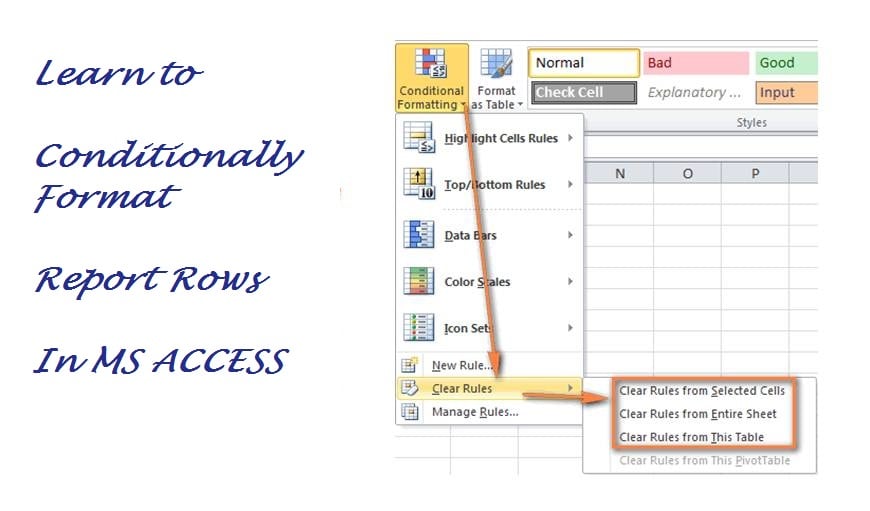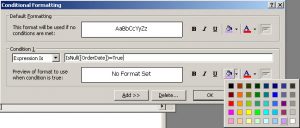In this article, we learn about the conditional formatting option for report rows in MS Access, how it is useful, and how to put it into action.
MS Access reports have been provided with the purpose of making it easier for the user to understand what is there in the data, and what is it trying to convey. To ensure that these reports do exactly what they are meant to do, they have also been accompanied by a lot of formatting options. Depending on your needs and the kind of results you are looking for, you can set certain criteria and conditions in your report. Which if met, will show a particular kind of formatting, so that the user can easily make sense of the data.
For example – let’s suppose that you have attached a certain control on your report and forms. Now, these are the controls that you constantly need to monitor and keep a track of. To make tracking easier you can make use of conditional formatting. This will ensure that once the condition or criteria you specified, has been met, it is formatted in a way that tracking the change becomes easier for you. Now you might also want to apply this conditional formatting in a way that it changes the color of a complete row, in certain situations.
Applying conditional formatting to report rows in MS Access

For this, we will first have to organize data in a way that all the active members appear in one row. You can open the report in design view to check its design and basic formatting of the row that you want to apply conditional formatting to.
Applying conditional formatting to Access report rows
- To apply conditional formatting to a particular section or controls in a report, you need to select them, open Format, and then select Conditional Formatting.
- Now you need to set the condition which if met, will lead to the application of conditional formatting in selected sections. So make sure the expression you specify here is correct. Or the formatting will not be applicable.
With the same procedure, you can opt for applying conditional formatting for those sections of the report rows where the specified condition is not met. For this, you will have to state the opposite expression of what you mentioned here. This will ensure that sections which meet the specified condition, and those which do not meet it, are formatted differently so that you can easily distinguish between the two.
Important Points
Conditional formatting can be of great help for multiple businesses and organizations, as with the help of this, one can easily distinguish between records that are important and the ones that are not. And keep their focus on sections which are important and need to be monitored or followed.
For any Access business user the data stored in the database is of critical importance. To ensure availability of the data even in the event of a database crash, invest in a tool that can repair accdb database for swift recovery.
Author Introduction:
Vivian Stevens is a data recovery expert in DataNumen, Inc., which is the world leader in data recovery technologies, including mdf repair and excel recovery software products. For more information visit www.datanumen.com